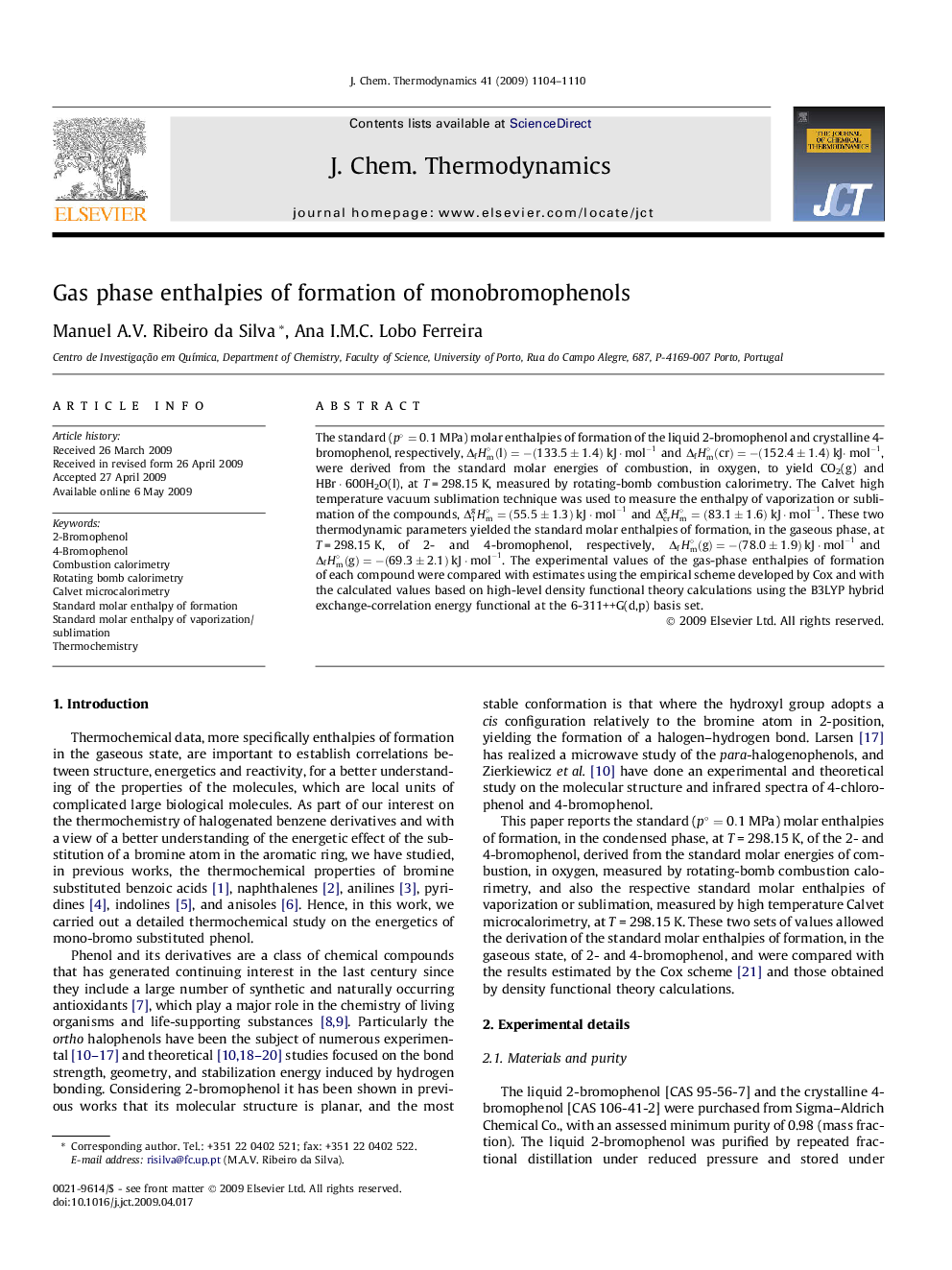| کد مقاله | کد نشریه | سال انتشار | مقاله انگلیسی | نسخه تمام متن |
|---|---|---|---|---|
| 217081 | 1426296 | 2009 | 7 صفحه PDF | دانلود رایگان |

The standard (p∘=0.1MPa) molar enthalpies of formation of the liquid 2-bromophenol and crystalline 4-bromophenol, respectively, ΔfHm∘(l)=-(133.5±1.4)kJ·mol-1andΔfHm∘(cr)=-(152.4±1.4)kJ·mol-1, were derived from the standard molar energies of combustion, in oxygen, to yield CO2(g) and HBr · 600H2O(l), at T = 298.15 K, measured by rotating-bomb combustion calorimetry. The Calvet high temperature vacuum sublimation technique was used to measure the enthalpy of vaporization or sublimation of the compounds, Δ1gHm∘=(55.5±1.3)kJ·mol-1andΔcrgHm∘=(83.1±1.6)kJ·mol-1. These two thermodynamic parameters yielded the standard molar enthalpies of formation, in the gaseous phase, at T = 298.15 K, of 2- and 4-bromophenol, respectively, ΔfHm∘(g)=-(78.0±1.9)kJ·mol-1andΔfHm∘(g)=-(69.3±2.1)kJ·mol-1. The experimental values of the gas-phase enthalpies of formation of each compound were compared with estimates using the empirical scheme developed by Cox and with the calculated values based on high-level density functional theory calculations using the B3LYP hybrid exchange-correlation energy functional at the 6-311++G(d,p) basis set.
Journal: The Journal of Chemical Thermodynamics - Volume 41, Issue 10, October 2009, Pages 1104–1110